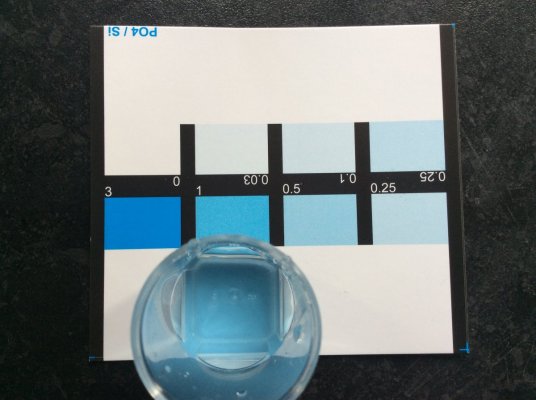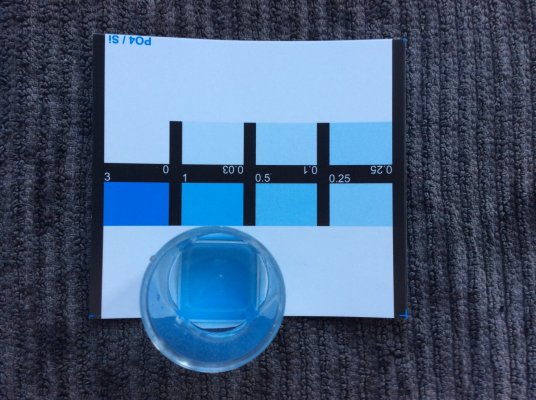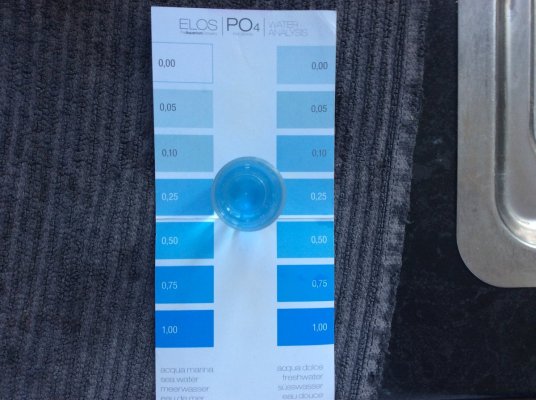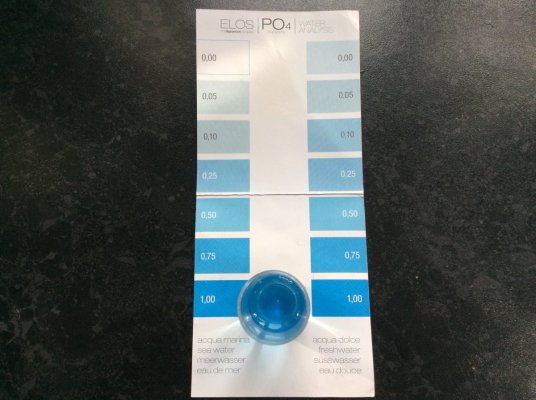- Joined
- Sep 21, 2018
- Messages
- 6,675
- Reaction score
- 7,169
1 g TSP dodecahydrate (MW 380) in 100 mL RODI is 2500 ppm PO4. Dilute 4.8 mL of this solution to 20 mL RODI to make it less concentrated so as to avoid forming a precipitate when adding it to 6 L of saltwater. Stir the 6 L while adding this diluted solution. The PO4 should be 2 ppm.Yeah, let's go with that. Cheers























